Are you looking to create a stunning outdoor space that is sure to turn heads and make your neighbors envious? Well look no further than geranium gardens!
With the perfect blend of vibrant colors, delicate petals, and rich fragrances – these beautiful garden blooms can transform any outdoor area into a colourful showstopper.
Whether it’s for an annual display or to fill up an awkward corner of your yard, there are endless ways to create captivating Geranium gardens that will last throughout spring and summer.
In this blog post we’ll explore some creative ideas for adding these breathtaking blossoms into your outdoor oasis. Ready? Let’s get started!
Five Companion Plants for Geraniums
Catnip (Nepeta cataria)
Catnip is a lovely companion plant for geraniums, with their fragrant grey-green foliage and vibrant clusters of white flowers.
Plus, as an added bonus, cats simply adore it!Chives (Allium schoenoprasum)
Chives are another great companion to geraniums, delivering a spectrum of purple blooms in the late spring and early summer months.
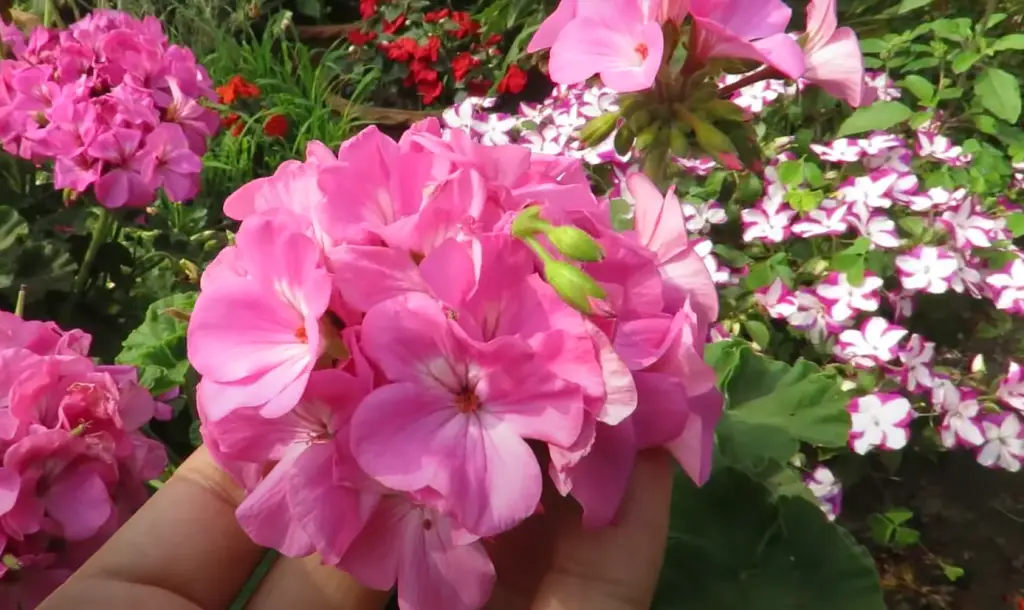
Their vibrant flowers attract beneficial insects such as ladybugs and bees, while their mild onion flavour pairs perfectly with salads or as a garnish for soups and casseroles.
Alliums (any plant in the Amaryllidaceae family)
Alliums are a diverse family of plants, which range from dainty onion-like plants to majestic globe-shaped blossoms. Their scintillating blooms come in a variety of shapes and colors, making them a beautiful addition to any garden bed. Alliums also attract beneficial insects such as hoverflies and lacewings, which help to keep pests at bay.
Marigolds (Tagetes erecta)
Marigolds are a cheerful companion for geraniums, with their brilliant yellow-orange blooms and fragrant foliage.
These drought-tolerant plants will bring a splash of colour to any garden area, and can be used as edging around beds or in containers. Plus, they help to ward off pests like aphids and whiteflies.
Nasturtium (Tropaeolum majus)
Nasturtiums are cheery little plants with bright orange and yellow flowers. They’re drought-tolerant and can thrive in full sun or partial shade. Nasturtiums are also edible, adding a peppery flavour to salads or as a garnish for dishes. Plus, their bright blossoms will attract beneficial insects such as hoverflies, ladybugs, and bees.
More Plants to Pair with Geraniums
Dahlias (Dahlia spp.)
Dahlias are a stunning addition to any garden, with their wide range of colors and shapes. These long-lasting flowers will bloom from late summer through early fall, making them an excellent choice for creating long-lasting displays. Plus, they attract plenty of beneficial insects such as honey bees, hoverflies, and lacewings.
Petunias (Petunia spp.)
Petunias come in a wide range of colors and sizes, making them perfect for window boxes or containers. These easy-care flowers are ideal for edging borders or filling gaps between plants. Plus, their small blooms attract beneficial insects such as hoverflies, ladybugs, and honeybees.
Lavender (Lavandula spp.)
Lavender is an excellent addition to any geranium garden, with its sweet aroma and beautiful purple blooms.
This herbaceous plant provides a range of health benefits such as reducing stress, promoting relaxation, and improving overall air quality. Plus, its delicate flowers attract plenty of beneficial insects such as bees and butterflies.
Geranium Garden Ideas
Stylish Clusters
Planting geraniums in your garden is a fun way to decorate. Plant different kinds of geraniums in the same area for lots of colors and shapes.
An Elegant Touch
Geraniums make a great addition to any outdoor area. Put them in window boxes or containers with other plants like dahlias, petunias, and lavender. This will create a beautiful mix of colors and textures that will brighten up your outdoor space all summer long.
A Blooming Masterpiece
Create a stunning display in your garden by combining geraniums with other plants like alliums, marigolds, and petunias. This will create a beautiful mix of colors and textures that will draw the eye and add interest to your outdoor area.
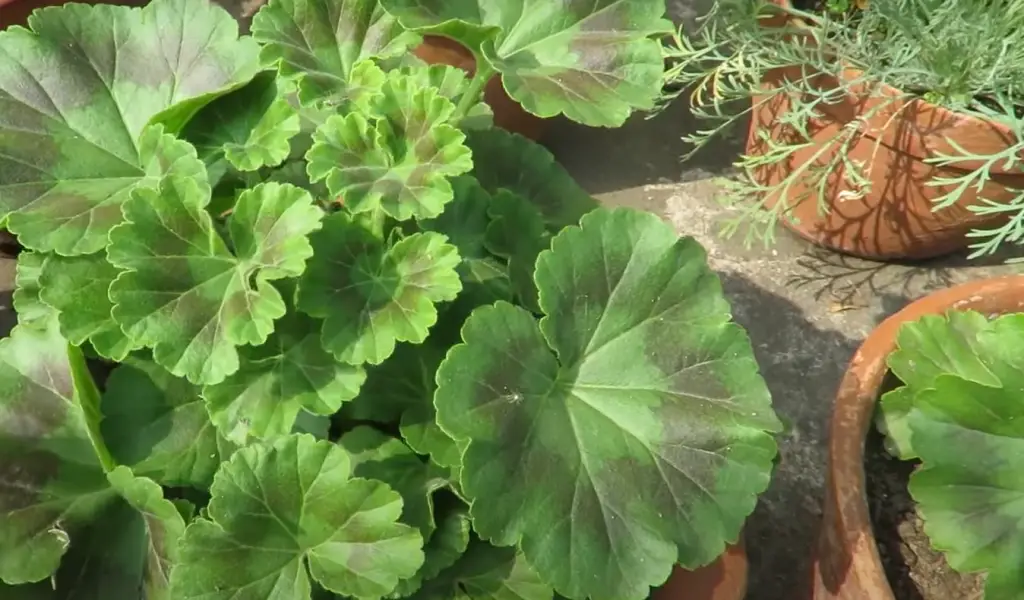
Plus, the combination of flowers will attract plenty of beneficial insects such as bees and butterflies.
Glass Effect
Bring the beauty of the outdoors inside with a glass terrarium filled with geraniums. The terrarium will create an exotic, tropical feel in your home as well as providing a great way to show off your favourite blooms. This is also a great way to provide a bit of colour in shady areas or for people who don’t have much outdoor space.
Simple Yet Effective
Geraniums pair well with other plants for a simple, yet effective look. Fill hanging baskets or window boxes with geraniums and other flowers like petunias, nasturtiums, and marigolds.
This will create a beautiful display of colour that will be sure to draw the eye. Plus, this combination of blooms will attract plenty of beneficial insects such as bees, butterflies, and hoverflies.
A Colourful Centrepiece
Create a stunning centrepiece for your outdoor area by planting geraniums in the centre of a large pot or container. Surround them with other plants like nasturtiums, dahlias, and lavender to make it even more beautiful.
This combination of flowers will provide long-lasting colour while also attracting plenty of beneficial insects such as bees, ladybugs, and hoverflies.
Balcony Appeal
Make the most of your balcony with a colourful combination of geraniums, petunias, and nasturtiums. This will create a beautiful display that adds colour and interest to your outdoor area. Plus, this combination of blooms will attract plenty of beneficial insects such as bees, hoverflies, and ladybugs.
Craft and Display
Geraniums also make great additions to any craft project. Add them to wreaths, garlands, or other decorations for a unique look. You can also use geraniums in arrangements and displays like topiaries for centrepieces.
With their bright colors and long-lasting blooms, they will make any crafts project or display stand out.
Hanging Blooms
Geraniums make a great addition to any hanging basket or window box.

They pair well with other flowers like petunias, nasturtiums, and marigolds. This combination of blooms will create a stunning display that will draw the eye while also attracting plenty of beneficial insects such as bees, ladybugs, and hoverflies.
Indoor Haven
Geraniums can also be used indoors for a touch of outdoor beauty. Put them in containers or hanging baskets in shady areas like porches, decks, and balconies. This will provide long-lasting colour while also providing plenty of benefits to beneficial insects such as bees and butterflies.
FAQ
What pairs well with geraniums?
Geraniums pair well with other plants like petunias, nasturtiums, and marigolds for a beautiful mix of colors and textures. This combination of blooms will attract plenty of beneficial insects such as bees, butterflies, and hoverflies.
Can geraniums be used indoors?
Yes, geraniums can be used indoors. Put them in containers or hanging baskets in shady areas like porches, decks, and balconies. This will provide long-lasting colour while also providing plenty of benefits to beneficial insects such as bees and butterflies.
Can geraniums be used for crafts projects?
Yes, geraniums make great additions to any craft project. Add them to wreaths, garlands, or other decorations for a unique look. You can also use geraniums in arrangements and displays like topiaries for centrepieces. With their bright colors and long-lasting blooms, they will make any crafts project or display stand out.
Are there any benefits of having geraniums in the garden?
Yes, there are many benefits of having geraniums in your garden. They provide long-lasting colour and attract plenty of beneficial insects such as bees, butterflies, and hoverflies.
Plus, they pair well with other plants for a simple yet effective look that will add interest to any outdoor space.
Where is the best place to plant geraniums?
The best place to plant geraniums is in an area with full sun or partial shade and well-drained soil. Make sure to water them regularly, as they need moisture to thrive. Planting them in containers can also be a great way to add colour and interest to any outdoor space.
Do geraniums like full sun or shade?
Geraniums prefer full sun or partial shade and well-drained soil to thrive.
Planting them in containers can also be a great way to add colour and interest to any outdoor space.How do you use geraniums in the landscape?
Geraniums can be used in the landscape in a variety of ways. Plant them in flower beds, window boxes, hanging baskets, and containers for long-lasting colour.
Combine them with other plants like petunias and nasturtiums for a beautiful mix of colors and textures. You can also use geraniums in crafts projects like wreaths and garlands for a unique look.
Do geraniums need a lot of water?
Yes, geraniums need regular watering to thrive. Make sure to water them every few days, depending on the temperature and humidity levels of your area.
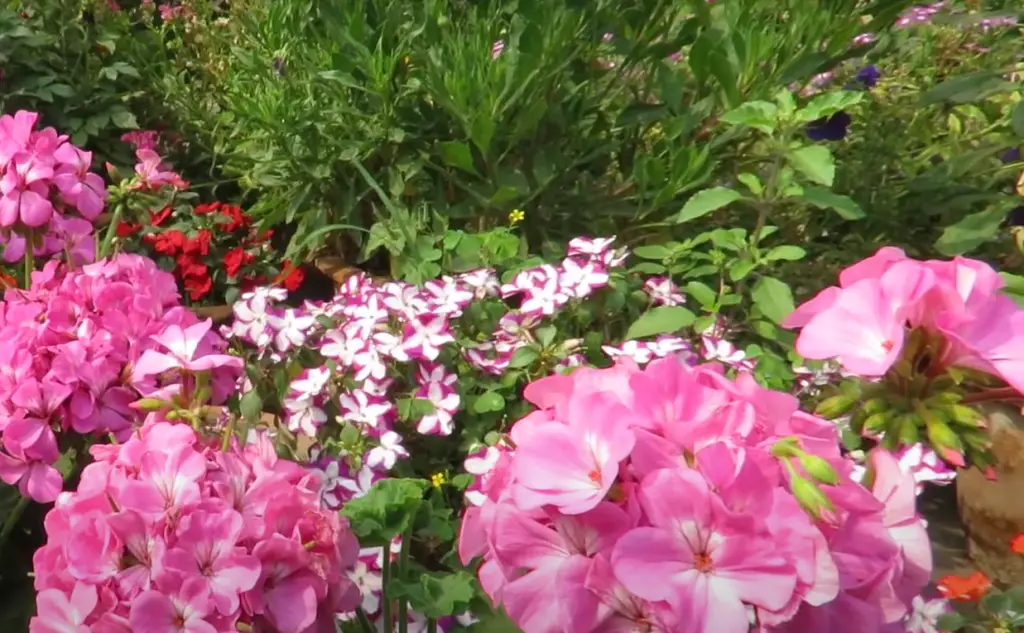
During hot weather or drought conditions, they may require additional waterings. It’s also important to make sure their soil is well-drained so that they don’t become waterlogged.
Are geraniums easy to take care of?
Yes, geraniums are relatively easy to take care of. They will need regular watering and some fertiliser or compost during the growing season.
Make sure to prune them regularly to encourage new growth and remove dead or diseased leaves. With proper care, geraniums can be a beautiful addition to any outdoor space.
Are geraniums annual or perennial?
Most geraniums are annual plants, meaning they will die off after one growing season.
However, some varieties are considered perennials and may come back year after year with proper care. It’s best to check with your local nursery or garden centre to find out which type of geranium you have.
Are geraniums toxic to pets?
Geraniums are generally considered non-toxic to cats and dogs, but it’s always best to check with your veterinarian before planting them in areas where your pet may come into contact with them.
Additionally, you should take precautions to keep your pet away from the plants if they start to chew or eat them.
What are some creative ways to use geraniums in the garden?
There are many creative ways to use geraniums in your garden. Plant them in a variety of containers and window boxes for added colour and interest. Combine them with other plants like petunias, nasturtiums, and marigolds for an eye-catching display.
Use them in crafts projects by creating wreaths, garlands, or piarias for a unique look. Finally, you can use geraniums to attract beneficial insects such as bees and butterflies for natural pest control and extra pollination.
What are the benefits of growing geraniums?
Geraniums are easy to care for and can add long-lasting colour to any outdoor space. They pair well with other plants for a simple yet effective look, and they attract plenty of beneficial insects such as bees, butterflies, and hoverflies.
Plus, you can use them in crafts projects like wreaths and garlands for extra decoration. With the right care, geraniums can be a beautiful addition to your garden.
What are some tips for growing geraniums?
The key to successful geranium growth is proper care and maintenance. Make sure to water them regularly, as they need moisture to thrive. Plant them in containers or hanging baskets for added colour and interest. Prune them regularly to encourage new growth, remove dead leaves, and prevent diseases. If you live in a cold climate, consider moving your geraniums indoors during the colder months.
Finally, make sure to fertilise them at least twice a month for optimum growth and health.
What are some common pests of geraniums?
Common pests that may attack your geraniums include aphids, mealybugs, thrips, and spider mites. These can be eliminated by using a natural pesticide or insecticidal soap.
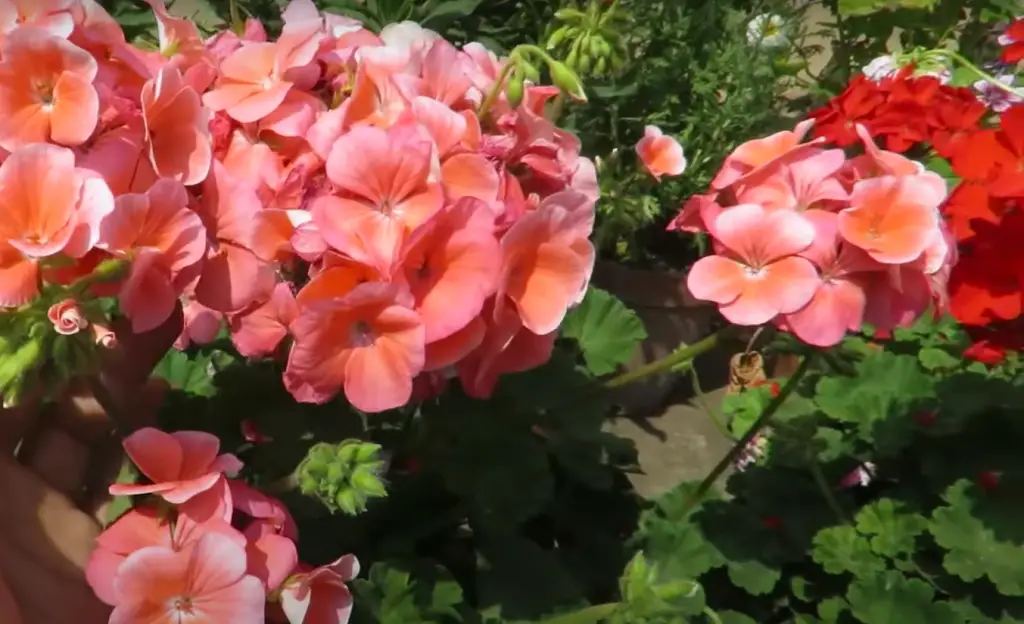
Additionally, you should remove any affected leaves to prevent the spread of pest infestation. Lastly, make sure to inspect your geraniums regularly and take appropriate measures when you spot any pests.
How do you propagate geraniums?
Geraniums can be propagated in several ways. The most common method is through stem cuttings, where new plants are grown from clippings of an existing plant.
You can also propagate them by division, or by harvesting and planting the seeds collected from spent blossoms. With proper care and maintenance, your new geraniums can thrive for many years.
How do you care for geraniums in winter?
For those who live in cold climates, it’s important to take special care of your geraniums during the winter months. Consider moving them indoors or into a greenhouse to keep them safe from frost and freezing temperatures.
Keep the plants well-watered, but avoid overwatering as this can cause root rot. Finally, make sure to prune them regularly and provide adequate sunlight for healthy growth.
How do I keep my geraniums blooming?
To ensure that your geraniums continue to bloom all season long, make sure to give them the right amount of sunlight. They need at least six hours of sun per day for optimal growth and flowering.
Additionally, you should fertilise them at least twice a month with a balanced fertiliser and deadhead spent blooms to encourage new blooms. With the proper care and maintenance, your geraniums will remain in bloom all season long.
How do I store geraniums for winter?
If you live in a cold climate and cannot keep your geraniums indoors, it’s important to properly store them for the winter months. Make sure to prune all of the foliage before storing, and then wrap the plant in burlap or newspaper.
Place them in a cool, dry place and keep them away from direct sunlight. When the weather warms up, you can replant your geraniums outside in their new homes.
How do I attract beneficial insects to my geraniums?
Attracting beneficial insects to your garden is an important step in keeping pests away and encouraging pollination. Planting native wildflowers such as asters, yarrow, coneflowers, and daisies can provide food and shelter for beneficial insects like bees and butterflies.
Additionally, you can add plants that produce nectar such as cosmos and lantana to attract beneficial predators like ladybugs and lacewings.
Why do geraniums droop?
Geraniums may start to droop due to a number of factors. Lack of water can cause them to become wilted and limp, so make sure they are getting enough moisture.
Additionally, too much fertiliser or direct sunlight can cause the leaves to wilt. If your geraniums have started to droop, try adjusting their watering, sunlight, and fertiliser levels to see if that helps. If not, you may need to move them to a new location or give them more shade.
Why do geraniums turn yellow?
Geraniums may start to yellow due to a lack of nutrients or sunlight. Make sure they are getting enough nitrogen, phosphorus, and potassium from fertilisers, as well as adequate amounts of sunshine.
Additionally, yellowing can be caused by overwatering or too much fertiliser, so adjust the watering and feeding schedule accordingly. If all else fails, you may need to repot your geraniums in fresh soil and compost to help them recover.
Does pruning geraniums help to improve their growth?
Pruning your geraniums can help them grow stronger and healthier. Pruning is a great way to keep the plant in shape, promote air circulation, and prevent disease by removing dead or damaged foliage.
It’s best to prune during the spring season before any flowers have bloomed. This will encourage strong, healthy growth and ensure that the geraniums have plenty of time to recover before the fall season.
Do geraniums attract butterflies?
Yes, geraniums are known to be a great way to attract butterflies. Planting different types of flowers such as cosmos and lantana will encourage even more butterfly visits to your garden.
Additionally, you can use certain plants like mint and lavender to help ward off pests while still providing food for the butterflies. With the right combination of plants and flowers, your garden can be a haven for butterflies.
Does deadheading geraniums help them to bloom?
Deadheading is an essential part of caring for geraniums, as it encourages new blooms throughout the season. Deadheading involves removing the spent flowers and stems from the plant in order to allow new buds to form.
It’s best to deadhead in late summer or early fall after the bloom season is over. This will ensure that your geraniums have plenty of time to replenish their energy stores and prepare for the next blooming cycle.
Does adding sand to the soil help geraniums to grow?
Adding sand to your soil can help improve drainage and aeration, which are both important factors in a healthy geranium garden. Sand should be incorporated into the existing soil rather than added as a top dressing.

Be sure to keep an eye on the moisture levels when using sandy soils, as they tend to dry out quickly. Adding mulch or compost can help keep the soil moist and improve fertility for optimal geranium growth.
Do geraniums need to be pruned in the winter?
Pruning your geraniums in the winter can help them prepare for more vigorous growth come spring. Pruning during this time helps stimulate new bud formation as well as shape and control the size of the plant.
Additionally, it’s important to remove any dead or damaged foliage before winter to prevent any disease or pests from taking hold. Remember to take care not to prune too much, as this can hinder the plants’ recovery and growth in the spring.
Are there any other tips for a healthy geranium garden?
In addition to the above tips, it’s important to keep an eye out for signs of disease or pests. Regularly inspect your plants and take action if you spot any problems.
Additionally, make sure to water your geraniums on a regular basis (about once a week) and fertilise them at least every three months.
Finally, don’t forget to deadhead before winter to ensure that the plants are properly nourished and ready for the upcoming blooming season.
Useful Video: How to Grow Big Geraniums – Complete Careguide |17m2garden
Conclusion
Geraniums are beautiful and easy-to-care for addition to any garden. With the right care and attention, your geraniums can thrive for many years to come. Make sure to prune regularly, deadhead in late summer or fall, provide adequate drainage and nutrition, and keep an eye out for signs of disease or pests.
With the help of these tips, you’ll soon have a beautiful and bountiful geranium garden!





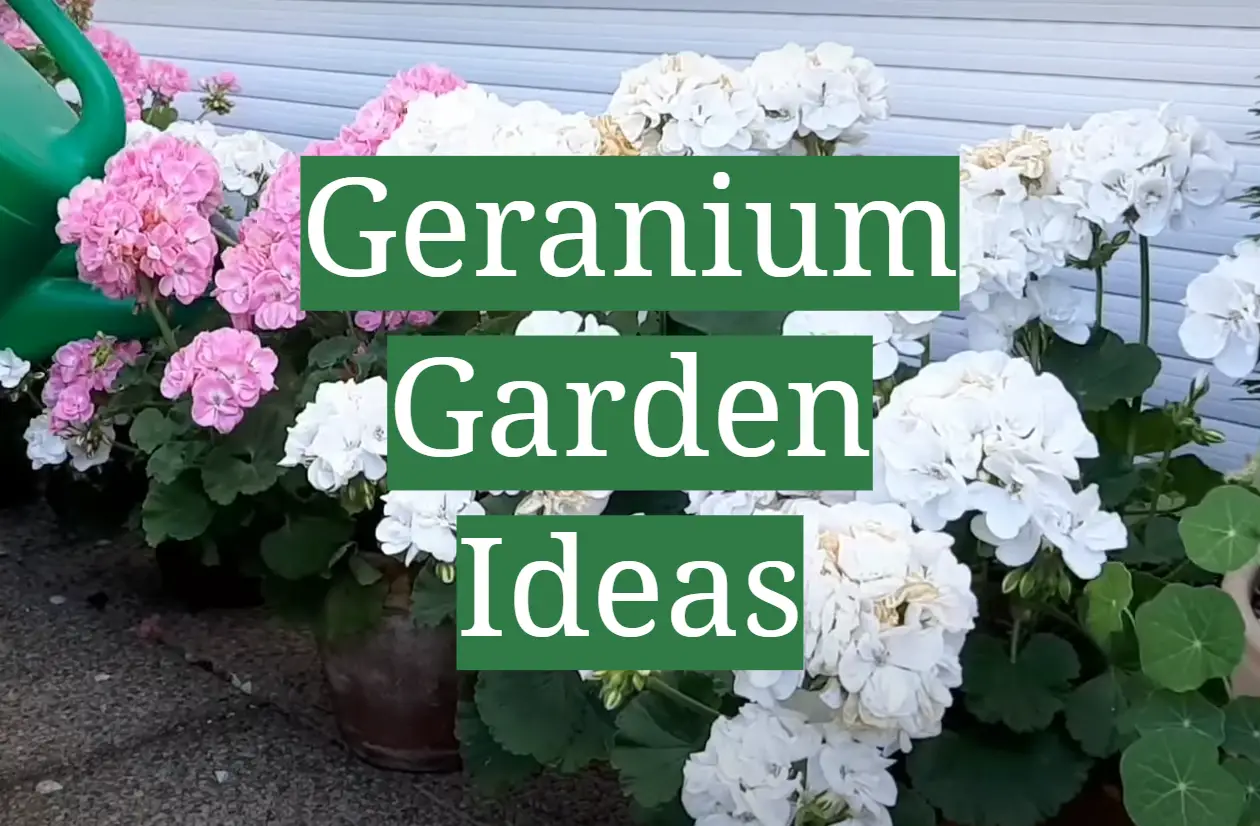




Leave a Reply
View Comments